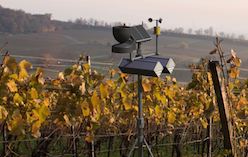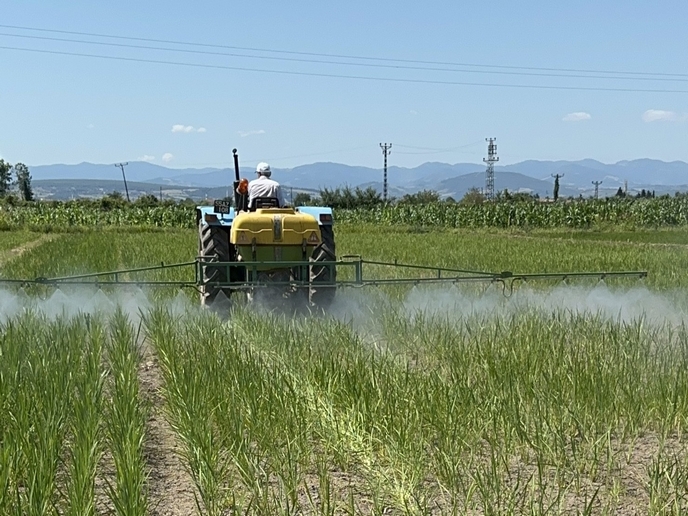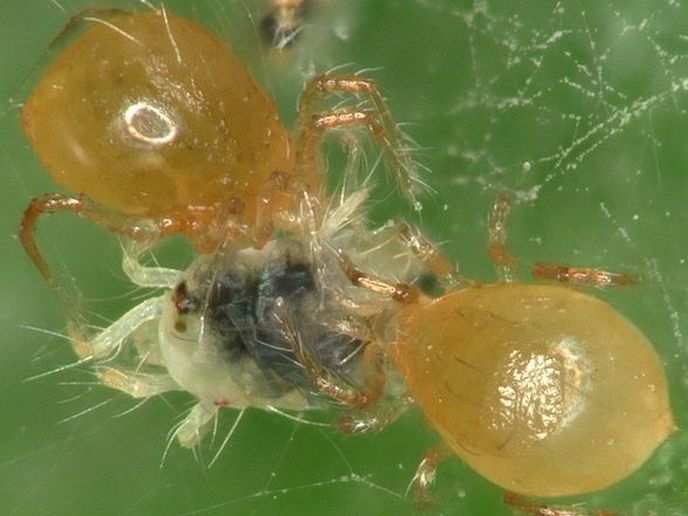Intelligent ‘health-check’ for farms goes head to head with crop diseases
Up to 60 % yield loss in agriculture overall is due to plant diseases. But the effect on individual farms can be devastating, with the potential to wipe out whole harvests if not detected in time. Scientists working on the EU-funded PCT project have developed an agricultural intelligence, diagnostic and advisory system consisting of measuring devices installed in areas under cultivation. An array of device sensors collates data about the site, the soil, leaf conditions and localised weather conditions, as well as the presence of pests and other pathogens, and matches it against a database of plant-specific diseases. The remote comprehensive ‘health-check’ based on the on-site monitoring provides farmers with precise information on disease risk, acts as an early warning system and provides recommendations on how to act to prevent the disease. “You spray only if you must,” says Csaba Arendas, CEO of QuantisLabs(opens in new window) in Budapest, Hungary, the company that developed PCT. In Europe, a farmer sprays an apple orchard on average 15 times during the growing season from March till August. For grape, an average of seven times. “If you use fewer [chemical] materials the cost of production is also lower, so timing is key,” Mr Arendas says. PCT’s leaf-area calculations help accurately determine the amount of spraying material required and prevents overspraying. “For grape you can save one or two sprayings,” reducing yield losses by 30 %, and saving around 20 % of pesticide use, he says. Array of sensors An array of sensors attached to a central unit the size of a laptop computer is affixed to a mast that is easily transportable and can be erected in a field without the need for specialised skills. The standard PCT model includes around a dozen sensors to measure air humidity, precipitation and temperature, soil moisture and temperature as well as leaf and canopy sensors and pest and spore detectors that count plant pathogens, including fungi. “For spores and pest detection it’s about a 95 % detection rate, so precision is very high,” Mr Arendas says, noting around 99 % of plant diseases are caused by pests and fungal spores. Measurements are uploaded to a server, and scientifically-validated algorithms and mathematical models are used to determine the probability of infection in a given area. This information is available in visual form and can be accessed by the user on any internet-connected device. “Not all farmers are super-experienced in disease identification. They want an easily-digestible, visual format and a simple answer to their questions of what to do,” Mr Arendas explains. The analysis is based on a huge data bank derived from thousands of years of agricultural knowledge and other data collected by the project team. “We have 10 scientists who did a huge study of the literature of major scientific articles in publications that we could utilise,” Mr Arendas says. QuantisLabs already had huge data sets and measurements from a previous SmartVineyard(opens in new window) product. “The EU funding enabled us to extend the existing system for vineyards into a comprehensive system for different crops,” he says. The system now on the market can be used for apples, olives, cocoa, coffee, rice and cotton, with other crops being added. Artificial intelligence and machine learning adjust the system to local patterns. Localised conditions Minor differences in humidity or temperature can modify the appearance or intensity of a plant disease and the plant’s stage of growth also matters. “Some pests prefer to eat the leaves, others prefer the flowers. If these things match, there can be a huge infection,” Mr Arendas explains. Some of the sensor technology was bought in, some existing sensor technology was upgraded and other more advanced sensors were custom-designed and prototyped during the project. Many of the parts were tested in university laboratories and small private labs and included special weather-proof batteries and the solar-powered central unit. PCT is already on the market internationally, with orders and pre-orders coming in from countries as far afield as Latin America for various crops, and work on versions for crops such as avocado being developed. Currently 80 % of sales are based on a subscription model at €150 per month per device, with possibilities of upgrading to include more sensors. One device on average can scan 10 hectares. “Every three years you would get a new device, like a mobile phone subscription,” Mr Arendas says.







